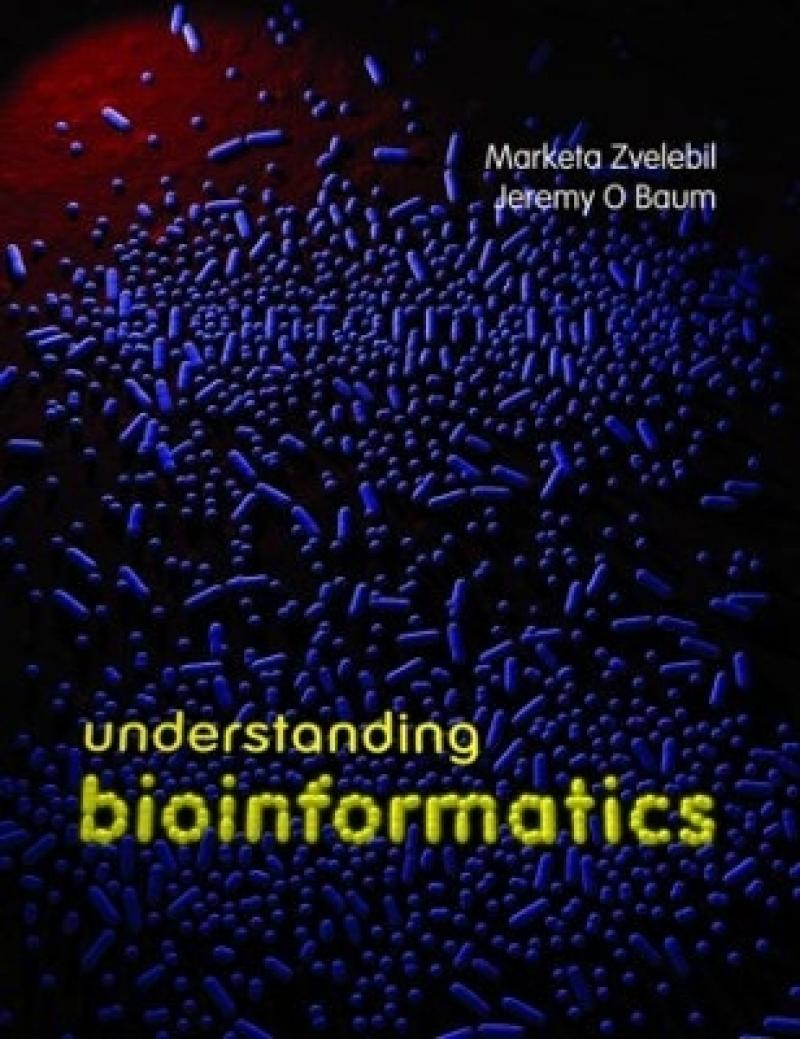Suitable for advanced undergraduates and postgraduates, Understanding Bioinformatics provides a definitive guide to this vibrant and evolving discipline. The book takes a conceptual approach. It guides the reader from first principles through to an understanding of the computational techniques and the key algorithms. Understanding Bioinformatics is an invaluable companion for students from their first encounter with the subject through to more advanced studies. The book is divided into seven parts, with the opening part introducing the basics of nucleic acids, proteins and databases. Subsequent parts are divided into 'Applications' and 'Theory' Chapters, allowing readers to focus their attention effectively. In each section, the Applications Chapter provides a fast and straightforward route to understanding the main concepts and 'getting started'. Each of these is then followed by Theory Chapters which give greater detail and present the underlying mathematics. In Part 2, Sequence Alignments, the Applications Chapter shows the reader how to get started on producing and analyzing sequence alignments, and using sequences for database searching, while the next two chapters look closely at the more advanced techniques and the mathematical algorithms involved. Part 3 covers evolutionary processes and shows how bioinformatics can be used to help build phylogenetic trees. Part 4 looks at the characteristics of whole genomes. In Parts 5 and 6 the focus turns to secondary and tertiary structure – predicting structural conformation and analysing structure-function relationships. The last part surveys methods of analyzing data from a set of genes or proteins of an organism and is rounded off with an overview of systems biology.The writing style of Understanding Bioinformatics is notable for its clarity, while the extensive, full-color artwork has been designed to present the key concepts with simplicity and consistency. Each chapter uses mind-maps and flow diagrams to give an overview of the conceptual links within each topic.
Les mer
Provides a guide to the field of Bioinformatics and takes reader from first principles through to an understanding of computational techniques and algorithms. It introduces the basics of nucleic acids, proteins and databases. Its each chapter uses mind-maps and flow diagrams to give an overview of conceptual links within each topic.
Les mer
Part 1: Background Basics 1. The Nucleic Acid World 2. Protein Structure 3. Dealing with Databases Part 2: Sequence Alignments 4. Producing and Analyzing Sequence Alignments 5. Pairwise Sequence Alignment and Database Searching 6. Patterns, Profiles, and Multiple Alignments Part 3: Evolutionary Processes 7. Recovering Evolutionary History 8. Building Phylogenetic Trees Part 4: Genome Characteristics 9. Revealing Genome Features 10. Gene Detection and Genome Annotation Part 5: Secondary Structures 11. Obtaining Secondary Structure from Sequence 12. Predicting Secondary Structures Part 6: Tertiary Structures 13. Modeling Protein Structure 14. Analyzing Structure-Function Relationships Part 7: Cells and Organisms 15. Proteome and Gene Expression Analysis 16. Clustering Methods and Statistics 17. Systems Biology Appendices: Background Theory Appendix A. Probability, Information, and Bayesian Analysis Appendix B. Molecular Energy Functions Appendix C. Function Optimization
Les mer
"Congratulations on a fine book! I do not think I have seen such a comprehensive text on bioinformatics algorithms and techniques before. I think this will be an invaluable resource for the bioinformatics community and researchers of neighbouring disciplines." - Jaap Heringa, Free University, Amsterdam "Many of the students in our program could benefit from reading this guide to genetics and molecular biology terms. Chapter 1 was well organized and easy to follow … I found that the illustrations were familiar and depicted the concepts well." - Sudha Iyengar, Case Western Reserve University, Cleveland, USA "I found Chapter 6 to be a very detailed and informative overview of multiple alignment and pattern discovery methods for biological sequences. The level of detail was good, as were most of the explanations of the methods. I would use this chapter in an undergraduate course in bioinformatics." - Tim Bailey, University of Queensland, Australia"This is very well done. Compared to other competing textbooks, your book will be probably the first one that explains gene finding in detail." - Sun Kim, Indiana University, Bloomington, USA"This chapter is nicely done, an easy read for an upperclassman or graduate student. The chapter reads as a How-To in protein structure prediction." - Chris Bystroff, Rensselaer Polytechnic Institute, Troy, USA, writing about Chapter 13"I enjoyed reading this chapter, and commend the authors on a well presented and explained introduction to the main algorithms and issues of analyzing this sort of data. The figures are useful and relevant and the techniques presented give a very good representation of the main algorithms in what is a diverse area of analysis.I believe this chapter to be at a great level for biology graduates, and in fact any student who has not been exposed to data mining concepts previously. I commend that the algorithms have been placed in a biological contexts wherever possible making the concepts more accessible." - Jen Taylor, University of Oxford, UK, writing about Chapter 16
Les mer
Produktdetaljer
ISBN
9780815340249
Publisert
2007-09-06
Utgiver
Vendor
CRC Press Inc
Vekt
2120 gr
Høyde
276 mm
Bredde
219 mm
Aldersnivå
UU, 05
Språk
Product language
Engelsk
Format
Product format
Heftet
Antall sider
800
Biographical note
Marketa Zvelebil
is the team leader of cancer informatics at The Breakthrough Toby Robins Breast Cancer Research Centre.Jeremy O. Baum
is an Honorary Teaching Fellow in the School of Crystallography, Birkbeck College.